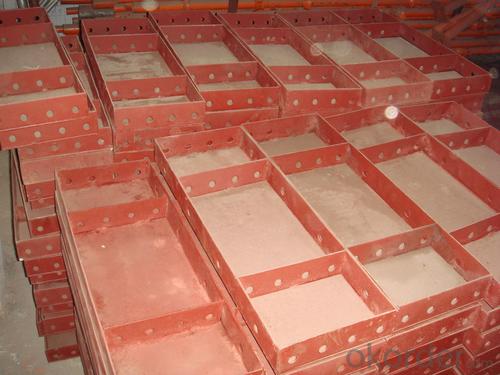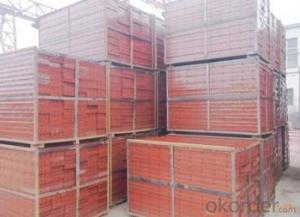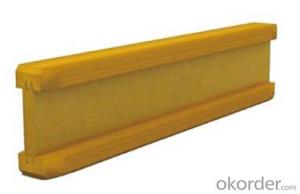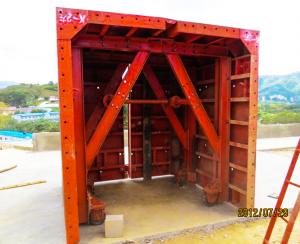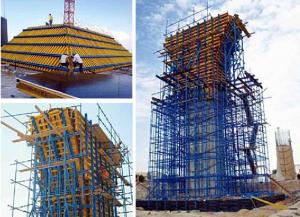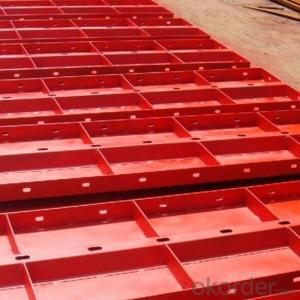Steel form
- Loading Port:
- China Main Port
- Payment Terms:
- TT OR LC
- Min Order Qty:
- -
- Supply Capability:
- -
OKorder Service Pledge
OKorder Financial Service
You Might Also Like
Specifications
Steel Formwork, Available in Various Weights, Dimensions and Area, Suitable for Docks
Steel formwork
Were engaged in development and manufacturing of the special type steel formwork for highways, railways, bridges, tunnels, walls, docks, reservoirs, large-scale stadiums, exhibition centers, and more
Specifications:
Dimension: 300 x 1,500 x 55, 300 x 1,200 x 55, 300 x 900 x 55, 300 x 600 x 55, 250 x 1,500 x 55, 250 x 1,200 x 55, 250 x 900 x 55, 250 x 600 x 55, 100 x 100 x 1,500, 100 x 100 x 1,200, 100 x 100 x 900, and 100 x 100 x 600mm
Area/pc:0.45, 0.36, 0.27, 0.18, 0.375, 0.30, 0.225, 0.15, 0.30, 0.24, 0.18, and 0.12m2
Weight: 17.99, 14.98, 11.86, 8.68, 15.60, 13.80, 10.46, 7.87, 15.40, 12.86, 10.86, and 7.48kg
Other dimensions and shapes are subject to mutual discussions
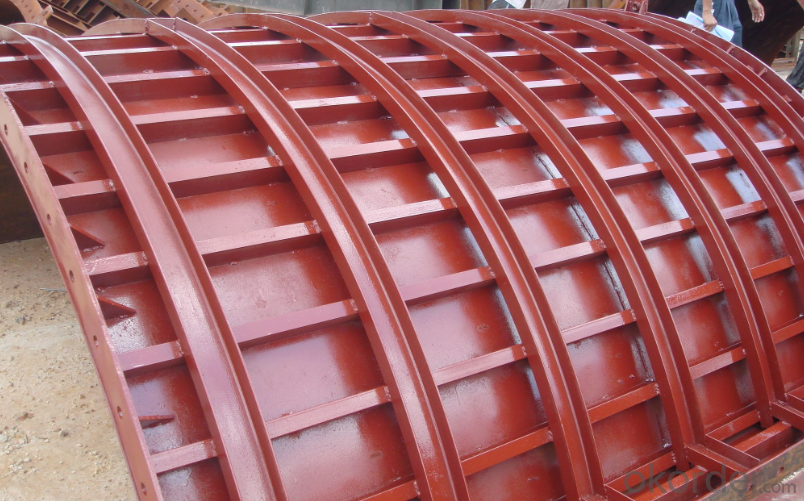
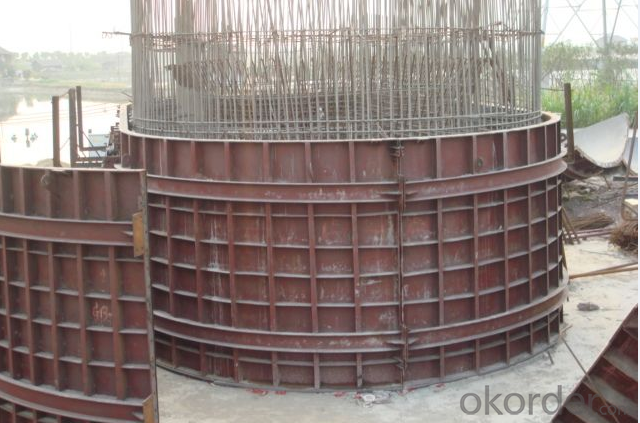
- Q: What are the considerations when designing steel formwork for columns?
- When designing steel formwork for columns, several considerations need to be taken into account. Firstly, the load-bearing capacity of the formwork needs to be determined based on the weight of the concrete and any additional loads that may be applied. The formwork should also be designed to withstand the pressure exerted by the fresh concrete during pouring and curing. Another important consideration is the size and shape of the column. The formwork needs to be customized to match the dimensions and contours of the column to ensure a precise and accurate mold. Additionally, the formwork should be designed to allow for easy installation and removal, as well as easy access for concrete pouring and finishing. Durability is also a significant factor. The steel formwork must be sturdy and robust enough to withstand the repetitive use and handling during the construction process. It should be able to resist wear and tear, as well as any potential impacts or vibrations that may occur on the construction site. Furthermore, safety considerations are paramount. The formwork should be designed to provide a stable and secure working platform for the workers involved in the installation and pouring of concrete. Adequate precautions must be taken to prevent any potential accidents or collapses. Lastly, cost-effectiveness is an important consideration. The design should aim to minimize material and labor costs while still meeting the required strength and durability standards. Efficient use of materials and ease of assembly and disassembly can contribute to cost savings. Overall, when designing steel formwork for columns, considerations such as load-bearing capacity, column size and shape, durability, safety, and cost-effectiveness are crucial to ensure a successful and efficient construction process.
- Q: Can steel formwork be used in underground structures?
- Yes, steel formwork can be used in underground structures. It is commonly used in construction projects where durability and strength are essential, making it suitable for underground structures that require robust and long-lasting formwork.
- Q: Are there any special considerations when using steel formwork in cold weather conditions?
- Yes, there are several special considerations when using steel formwork in cold weather conditions. Firstly, steel contracts and becomes more brittle in cold temperatures, which can increase the risk of cracks or fractures in the formwork. Therefore, it is important to ensure that the steel formwork is properly designed and reinforced to withstand the potential stress caused by temperature changes. Secondly, cold weather can also affect the curing process of concrete. Steel formwork tends to conduct heat away from the concrete, slowing down the curing process. This can result in insufficient strength development and compromised structural integrity. To mitigate this, additional measures may be required, such as using insulating materials or applying external heat sources to maintain optimal curing conditions. Furthermore, cold weather can also cause moisture to freeze on the surface of the steel formwork, leading to the formation of ice. Ice can increase the weight of the formwork and hinder the removal process. It can also cause damage to the formwork if not properly addressed. Therefore, it is essential to take preventive measures, such as using anti-freeze agents or providing adequate drainage to prevent ice buildup. Lastly, working in cold weather conditions can be challenging for construction workers. It is important to ensure that appropriate safety measures are in place, such as providing adequate insulation, heating facilities, and protective clothing to prevent workers from suffering from hypothermia or other cold-related illnesses. In conclusion, when using steel formwork in cold weather conditions, it is crucial to consider the increased risk of brittleness, the impact on concrete curing, the potential for ice formation, and the well-being of workers. By taking these special considerations into account, the use of steel formwork can still be efficient and effective in cold weather conditions.
- Q: How does steel formwork contribute to improved construction efficiency?
- Steel formwork contributes to improved construction efficiency in several ways. Firstly, steel formwork is durable and long-lasting, allowing it to be reused multiple times. This reduces the need for frequent replacement and lowers overall construction costs. Secondly, steel formwork is lightweight and easy to assemble, making it quick to install and dismantle. This saves time and labor during the construction process. Additionally, steel formwork provides a smooth and even surface finish, resulting in high-quality concrete structures. This eliminates the need for extensive polishing or plastering work, further enhancing construction efficiency. Overall, steel formwork improves construction efficiency by reducing costs, saving time, and ensuring superior concrete finishes.
- Q: Can steel formwork be used for industrial construction projects?
- Yes, steel formwork can be used for industrial construction projects. Steel formwork is a versatile and durable option that is commonly used in the construction industry for various applications, including industrial projects. It offers several advantages over other types of formwork materials such as timber or plastic. Firstly, steel formwork provides superior strength and stability, making it suitable for large-scale projects that require heavy-duty support. It can withstand high pressure and loads without warping or bending, ensuring the structural integrity of the concrete being poured. Additionally, steel formwork is highly reusable, which makes it a cost-effective choice for industrial construction projects. Unlike timber formwork, which can only be used a few times before it starts to degrade, steel formwork can be used repeatedly for multiple projects. This reduces the overall construction cost and minimizes waste. Moreover, steel formwork offers excellent dimensional accuracy and consistency. It can be easily fabricated to meet specific project requirements, ensuring precise and uniform concrete shapes and finishes. This is particularly important in industrial construction, where precise measurements and high-quality finishes are often required. Furthermore, steel formwork is resistant to environmental factors such as moisture, temperature changes, and chemical exposure. This makes it suitable for various industrial settings, including manufacturing plants, warehouses, and power plants, where harsh conditions may be present. In conclusion, steel formwork is a viable option for industrial construction projects due to its strength, durability, reusability, dimensional accuracy, and resistance to environmental factors. Its use can streamline the construction process, reduce costs, and ensure the long-term stability and integrity of industrial structures.
- Q: What are the different types of joints used with steel formwork?
- The different types of joints used with steel formwork include bolted joints, welded joints, and interlocking joints.
- Q: Can steel formwork be used for both vertical and horizontal concrete elements?
- Yes, steel formwork can be used for both vertical and horizontal concrete elements. Steel formwork is highly versatile and can be easily assembled and disassembled, making it suitable for various types of concrete structures. It provides a strong and durable support system for pouring concrete, ensuring the desired shape and finish of the concrete element. Whether it is for walls, columns, beams, slabs, or any other concrete component, steel formwork can be tailored and adjusted to meet the specific requirements of the project. Its ability to withstand high pressure and heavy loads makes it ideal for both vertical and horizontal applications. Additionally, steel formwork can be reused multiple times, making it a cost-effective solution for construction projects.
- Q: Can steel formwork be used for both interior and exterior concrete structures?
- Both interior and exterior concrete structures can make use of steel formwork. Steel is a highly versatile material that offers exceptional strength and durability, making it suitable for various construction applications. When utilized as formwork, steel provides a rigid and stable framework capable of withstanding the pressure exerted by fresh concrete during pouring and curing. Therefore, it is an ideal choice for creating both interior and exterior concrete structures. Steel formwork is commonly employed in the construction of walls, columns, beams, slabs, and other structural elements in buildings and infrastructure projects. Its robustness enables it to withstand harsh weather conditions and other environmental factors, making it well-suited for exterior structures. Moreover, steel formwork can be easily reused multiple times, making it a cost-effective option for both interior and exterior projects. Additionally, steel formwork offers flexibility in design and can be easily customized to meet specific project requirements. Its assembly and disassembly processes are simple, allowing for efficient construction processes. Furthermore, the smooth surface of steel formwork produces high-quality finishes on concrete structures. Nevertheless, it is crucial to acknowledge that proper maintenance is essential to ensure the longevity of steel formwork and prevent corrosion. Regular inspections, cleaning, and the application of protective coatings are necessary to maintain the formwork's integrity. In conclusion, steel formwork is a versatile and dependable choice for both interior and exterior concrete structures. Its strength, durability, and flexibility make it suitable for a wide range of construction projects, resulting in efficient and high-quality outcomes.
- Q: What are the different types of steel formwork joint solutions?
- Construction projects utilize various types of steel formwork joint solutions to enhance stability, strength, and flexibility in the formwork system. Commonly employed joint solutions include: 1. Butt Joint: This uncomplicated joint involves aligning and securing two steel formwork panels using bolts or clamps. It is easily assembled and disassembled, rendering it suitable for diverse construction applications. 2. Corner Joint: Used when two steel formwork panels meet at a corner, these joints entail overlapping the panels and securing them with bolts or clamps. Corner joints reinforce the formwork system, particularly in areas where walls or columns are being constructed. 3. T-Joint: When three steel formwork panels converge at a single point, T-joints are employed. These joints are created by overlapping the panels and securing them with bolts or clamps. T-joints are commonly utilized in projects involving complex shapes or structures. 4. L-Joint: Similar to T-joints, L-joints involve two steel formwork panels meeting at right angles. These joints are formed by overlapping the panels and securing them with bolts or clamps. L-joints are utilized for forming corners in formwork systems, such as during column or beam construction. 5. Hinged Joint: Hinged joints allow flexibility in the formwork system, enabling the panels to pivot or rotate to accommodate changes in shape or position. They are typically employed in curved or irregular structures where rigid joints may not be suitable. 6. Adjustable Joint: Adjustable joints facilitate height or width adjustments in the formwork system. These joints enable easy modification of formwork dimensions to accommodate changes in design or construction requirements. Adjustable joints are particularly useful in projects with varying dimensions or levels. It is crucial to select the appropriate steel formwork joint solution based on specific construction requirements and structural design. Proper installation and reinforcement of these joints ensure the stability and integrity of the formwork system, which is imperative for successful project execution.
- Q: Can steel formwork be used for elevated slabs?
- Yes, steel formwork can be used for elevated slabs. Steel formwork is a versatile and durable option for constructing elevated slabs. It provides a strong and rigid structure that can support the weight of the slab and any additional loads. Steel formwork also offers the advantage of being reusable, allowing for cost savings and efficiency in construction projects. Additionally, steel formwork can be easily adjusted and customized to meet specific design requirements, making it suitable for various types of elevated slabs. Overall, steel formwork is a reliable option for constructing elevated slabs due to its strength, durability, reusability, and versatility.
Send your message to us
Steel form
- Loading Port:
- China Main Port
- Payment Terms:
- TT OR LC
- Min Order Qty:
- -
- Supply Capability:
- -
OKorder Service Pledge
OKorder Financial Service
Similar products
Hot products
Hot Searches
Related keywords

